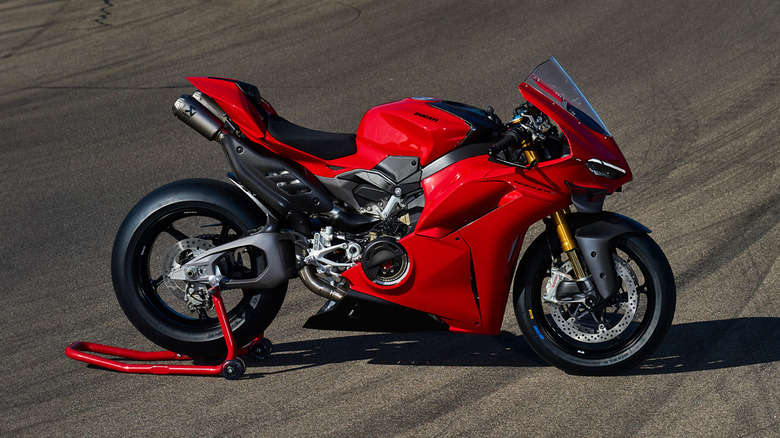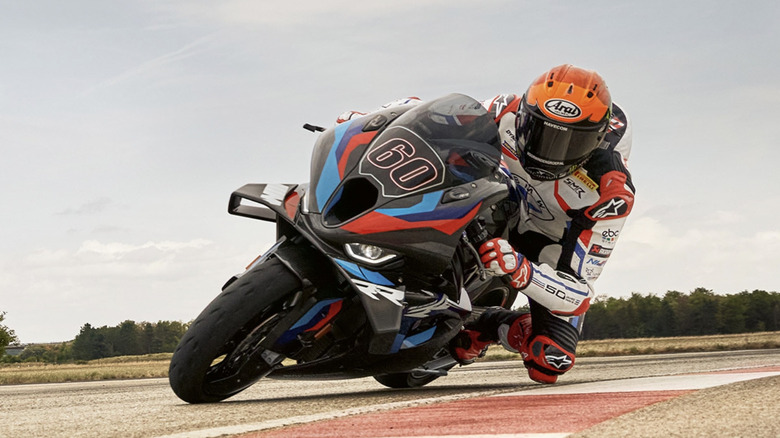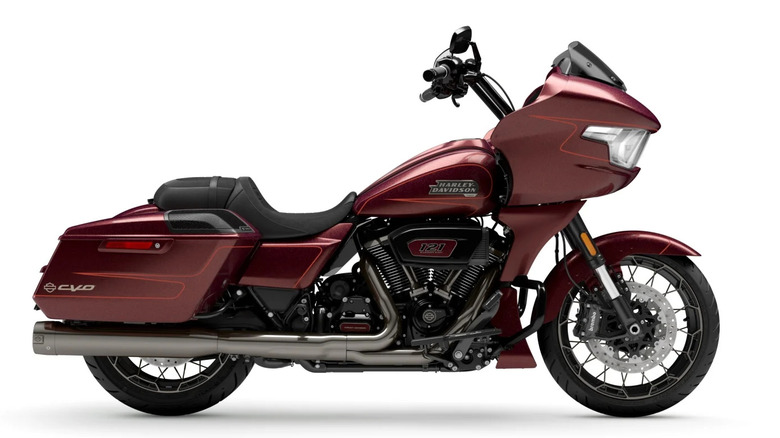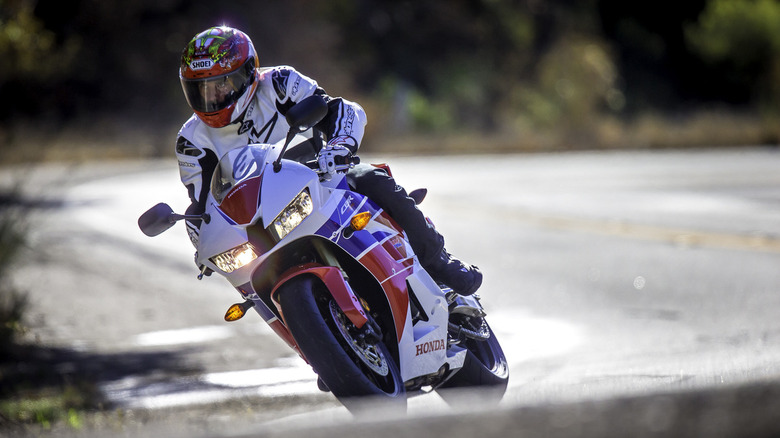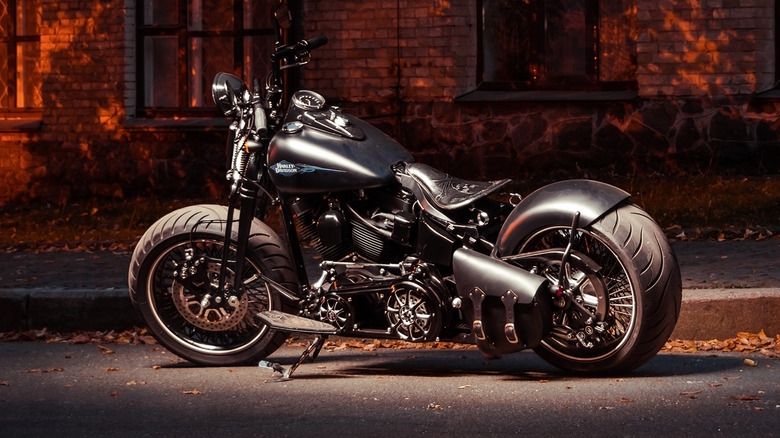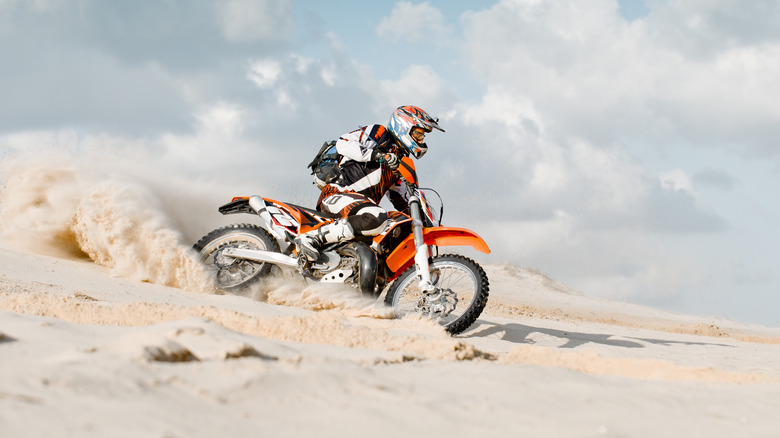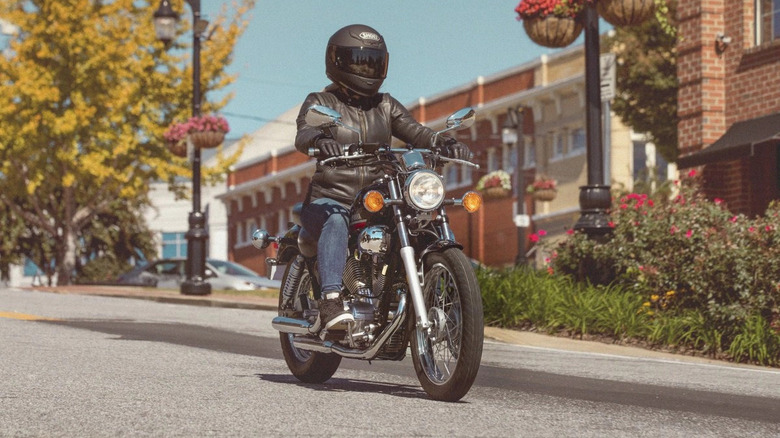5 Of The Worst Motorcycles For Beginners
Making mistakes when you're first embracing a new hobby (or obsession) is part of the experience. If you're learning to paint, you'll probably get the colors wrong on your first few attempts. Embracing your newfound love of model cars? You're likely to glue your fingers together at least once or twice before you master the craft.
But with motorcycles, the stakes are significantly higher. Some bikes are harder to handle than others, especially depending on your riding style and size. Some are meant for only the fastest of riders, with triple-digit speeds and mind-bending acceleration. And some motorcycles, while fun to look at, can be prohibitively expensive to own and maintain.
Go with the wrong first motorcycle and you may end up taking a loss when you sell it, or sinking a bunch of money into modifications or fixes trying to make it into the right bike. Worse yet, you could injure yourself or others with a bike that's too powerful or too difficult to control. But picking the right bike can help you learn to ride safely and save you money in the long run.
So based on years of riding experience, ownership of multiple kinds of motorcycles, and a desire to keep new riders safe, I've put together this list of bikes for beginners to avoid. We'll go over the methodology behind this list at the end.
1. High-horsepower speed machines
Motorcycles like the Kawasaki H2, BMW M 1000 RR, Ducati Panigale V4S, and Honda CBR1000RR-R are astonishingly fast. They have sleek design, excellent exhaust notes, and they receive their manufacturers' newest features. Top speed and acceleration are hard to beat with bikes like these, and when you consider the performance you get, they're a bargain compared to cars that cost much more. But they definitely aren't for beginners.
High-horsepower motorcycles, specifically sport bikes that are optimized for track performance, are best left to expert riders. You wouldn't want someone who just got their driver's license getting behind the wheel at Formula 1, and the principle is the same here.
For starters, the skills required to handle the power and speed of top-tier sport bikes are developed over time and with lots of practice. A new rider's first priorities should include things like making sure to ride with all the essential gear, learning to be comfortable and cautious in traffic, executing emergency maneuvers, and properly operating all the controls. On top of the dizzying speeds, high-performance bikes often have multiple riding modes, adjustable suspension, and complicated interfaces that add to the learning curve. Getting something simple with reasonable power will help new riders acclimate more quickly and stay safer longer.
2. Big and/or heavy bikes
Buying a big bike might seem appealing based on comfort, but you should avoid the biggest and heaviest models. Sure, a bike like the Harley-Davidson Road Glide has some pretty desirable features, and it might be the bike that you want to take on your next cross-country trip, but it's not ideal to learn on. Something like the Softail Slim is a much better bike for a beginner Harley-Davidson rider.
Whether it's moving it around in your garage, maneuvering it in a tight space, or parking it at low speed, small bikes are simply easier to handle. And even though they're easier to control, with small bikes there's still a good chance that in a slow-speed scenario, you're going to drop your bike — it's happened to the best of us. Picking up a bike like the Road Glide that weighs over 800 pounds is going to be seriously difficult. So, while you're learning how to ride a motorcycle (and how to pick one up after it's fallen over), try to get one on the svelte side of the scale.
3. New bikes in general, but especially expensive ones
Part of my guiding philosophy with vehicles, especially motorcycles, is to buy used when possible. As with any vehicle, used motorcycles tend to be less expensive than new ones. And there are lots of reliable motorcycles available in varying styles that you can ride with confidence. Initial depreciation of buying a new motorcycle can be as high as 20% to 30% in the first year, according to Cycle Trader – that's a big hit, especially if you want to upgrade after a year or two.
As previously mentioned, it's also possible that you're going to lay down your first motorcycle at low speeds, tipping it over in a parking lot or making a mistake during some slow-speed maneuver. With that in mind, I feel much better recommending a bike that feels worn in and less precious.
I do my best to keep every motorcycle I've owned in the best condition possible, but with something like a dirt bike, for example, abuse is part of the equation. When you're riding on dusty trails with branches, rocks, and sand assaulting the body and frame, some light damage is a foregone conclusion. For me, riding something used and broken-in reduces some of the anxiety and makes for a more enjoyable experience. New bikes have their place, and there are several affordable motorcycles worth considering for new riders, but for the frugal rider, a used bike can be a great introduction.
4. Highly modified used bikes
Buying a bike that's already been upgraded can be a positive experience. If the one you're looking to buy already has the aftermarket exhaust you want, or added features like heated grips, it can save you a bit of money over buying those parts new. It can also save you the time and hassle of installing new parts yourself. If you hate the look of a bulky original-equipment rear fender and someone's already installed a fender eliminator, that's an appealing addition that likely won't add much to the purchase price.
But purchasing a beginner bike with lots of modifications can be dangerous territory. A flashy new fairing kit on a motorcycle might be nice, but pair that with a new exhaust, new handlebars, and new mirrors, and you might be looking at a motorcycle that's been in some sort of serious crash. Does the motorcycle have fancy new bar ends and an upgraded clutch or brake lever? It's possible that it's been dropped and the seller is hiding damage. (If the seller still has the original parts, however, and they're in good condition, hidden damage is less likely.)
Finally, if there's a bike that seems like a great deal and you're interested, but it's highly modified, bring along an experienced friend who can spot damage. Or, better yet, take the bike for a professional inspection. It may cost a few bucks up front, but in the long run your wallet will thank you.
5. Bikes that don't suit your lifestyle
Be honest with yourself and try to rein in wishful thinking when it comes to buying your first motorcycle. On multiple occasions, I've purchased motorcycles (and motorcycle accessories) with the hopes that I'd embrace a new hobby or style of riding. For instance, I purchased a set of hard-sided cases for one of my motorcycles thinking that I'd take it on long-distance camping journeys. It took a few years of the side tanks collecting dust before I realized that most of my riding was done close to home and a small backpack or tank bag would suffice for most of my riding. Lesson learned.
Another money pit I made the unfortunate decision of buying was a used dirt bike that mostly sat around after I purchased it. I had taken a dirt-riding class and thought my riding style would suddenly change from canyon carver to desert rat. Spoiler alert: It didn't. The bike was good enough, and I loved getting out into nature, but riding dirt bikes just wasn't as enjoyable to me as sticking to pavement.
Spend some time thinking about how and where you want to ride before you buy a bike. Take a motorcycle safety course before dropping your hard-earned cash on a bike. And if you're unsure what kind of motorcycle you want to buy, look into the possibility of renting a motorcycle before you commit.
Methodology
This list was composed with beginners in mind. The ranking was done with safety in mind first, followed by cost, and finally convenience.
I've owned and ridden many different motorcycles over the years, and spent decades in the motorcycle community with other riders. It's not uncommon to hear about a rider who bought a bike that was way too fast for them – resulting in injury or death. There's also no shortage of tales regarding a rider's first bike being too big, too small, or hiding all sorts of modification issues and taking a big financial hit as a result.
Obviously, it's a good idea to stay away from the most unreliable bikes ever built. Before drilling down into the specifics of makes and models, though, it's important to categorize the kinds of bikes you like, whether you're buying new or used, and what will fit your lifestyle. I hope that after making all those considerations, you'll end up with a bike you love and that you learn to love riding on.
